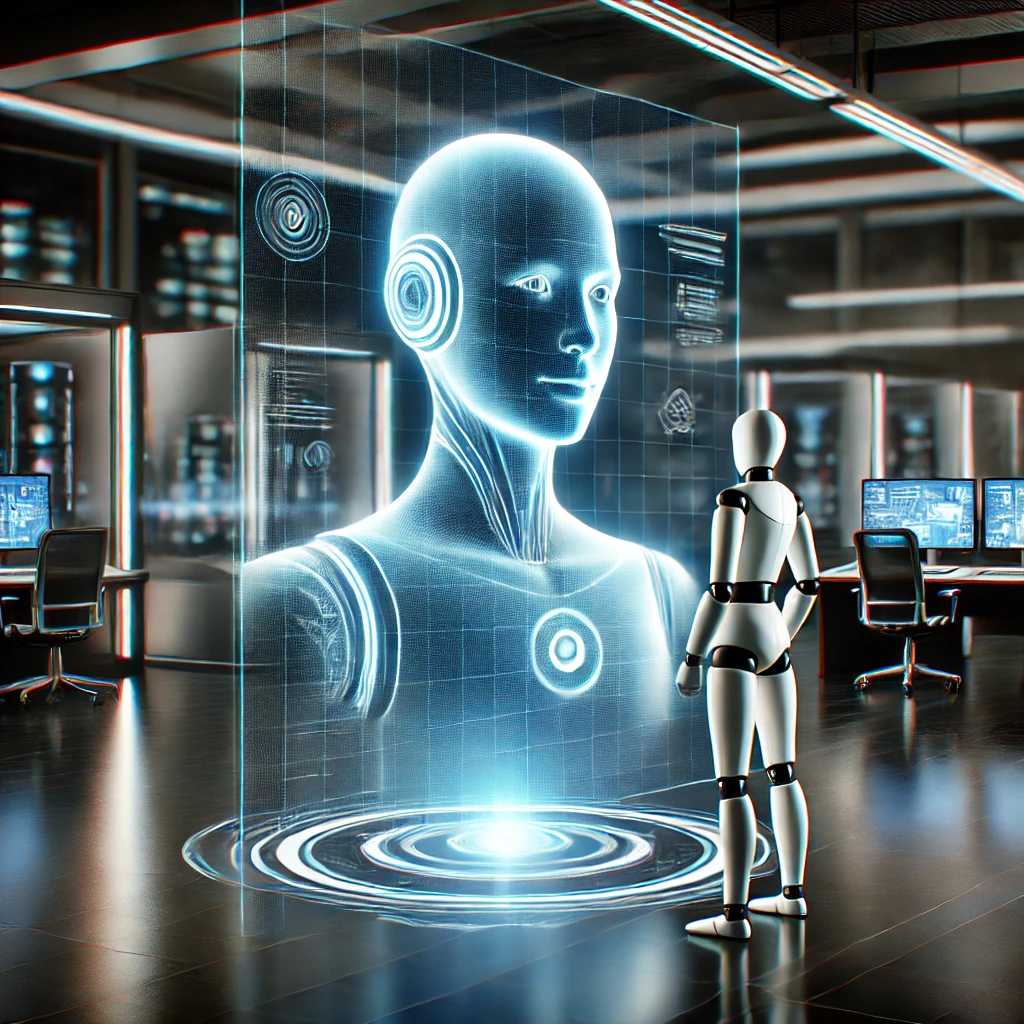
How to Build an AI Agent: Three Main Strategies
Every business can benefit from AI, but not all need complex solutions. How simple can effective AI really be? Let’s explore how to build a basic AI agent assist in under a week!
What Exactly is a Simple AI Agent?
A Simple AI Agent is a straightforward combination of three key elements:
A Single Knowledge Base
- The agent relies on one comprehensive source of information.
- This source is continuously updated to ensure accuracy.
- The knowledge base includes all necessary data to answer queries and perform tasks.
An Instruction Prompt
- The agent receives clear and concise commands.
- These instructions guide the agent’s actions and responses.
- The prompts are designed to be easy for the agent to interpret and execute.
A Few Communication Channels
- The agent interacts with users through limited but effective means.
- Common channels include text, voice, or chat interfaces.
- These channels are optimized for quick and efficient communication.
These elements create a powerful tool for automating interactions and enhancing customer experiences. Here are the most common use cases:
- 24/7 Customer Support: Our AI agent provides instant assistance, answering FAQs, and resolving issues at any time of day. It ensures customers always have access to the help they need, enhancing their experience and satisfaction.
- Lead Generation: Engage with potential customers proactively. The AI agent collects valuable information, qualifies leads efficiently, and ensures your sales team focuses on high-potential prospects. This helps streamline the lead nurturing process.
- Feedback Collection: Gather customer insights through interactive conversations. The AI agent asks the right questions, records responses, and analyzes the data to help you understand customer needs and improve your services.
- Information Sharing: Keep your customers informed with timely updates and announcements. The AI aagent can share news, promotions, and important information, ensuring your audience stays engaged and well-informed.
- Employee Onboarding & Training: Provide new hires with interactive and engaging onboarding experiences. The AI agent guides them through the training process, answers their questions, and ensures they feel supported from day one. This helps create a smooth transition into their new roles.
Steps to Create a Simple AI Agent
Define Its Main Function and Limitations
- Identify the specific tasks you want the AI agent to perform.
- Establish clear boundaries to ensure it operates within its intended scope, avoiding user frustration.
Gather and Prepare the Content for AI Agent’s Knowledge Base
- Collect all essential data and information the AI will need to function effectively.
- Organize this information systematically for quick and efficient access during interactions.
Develop Clear Instructions to Direct AI Agent’s Operations
- Craft detailed prompts and responses to shape the AI’s behavior and decision-making process.
- Ensure instructions are clear and concise to facilitate smooth operation.
Integrate with Primary Communication Platforms
- Connect the AI agent to essential platforms like your website, messaging apps, or customer service channels.
- Verify seamless communication and interaction across these platforms for a unified experience.
Build the AI Agent Using Accessible No-Code or Low-Code Tools
- Utilize user-friendly tools like Chatbase or Botpress to construct your AI agent with minimal coding effort.
- These platforms provide templates and interfaces that simplify the development process of no-code AI chatbot solution.
Test Rigorously and Deploy
- Conduct extensive testing to detect and resolve any functional or performance issues.
- Launch the AI agent and continuously monitor its interactions and effectiveness.
Refine Based on User Interactions
- Regularly update and enhance the AI agent based on user feedback and interaction data.
- Adapt to evolving user needs and preferences to maintain optimal performance.
This approach allows any business to leverage AI’s potential, regardless of size or technical expertise. Focusing on straightforward solutions saves on costs and time and positions your business at the forefront of customer interaction and operational efficiency.
Types of AI Agents: Which One Suits Your Needs?
Building an AI agent tailored to your business can seem complex. Breaking it down by strategy can clarify your path forward. Each type of AI agent maintains to different needs, timelines, and scales of operation. Here’s an overview:
1. Knowledge-Based AI Agents
Perfect for small businesses looking to test AI, these agents use a single database to answer user queries with simple prompts.
- Development Time: 2-10 days using no-code platforms like Chatbase or Botpress.
- Use Case: Providing basic support and testing AI functionalities without a big investment.
- Scalability: Limited to the basic functionalities of the platform, with no room for extensive scaling.
2. Multi-Flow AI Agents
Designed for small to medium-scale projects, these agents handle more complex interactions by integrating multiple knowledge bases, APIs, and conditional workflows.
- Development Time: 20-40 days using low-code platforms like VoiceFlow and Flowise.
- Use Case: Offering greater customization and control for nuanced customer engagement.
- Scalability: Can incorporate several flows and custom APIs, but scaling to a fully multichannel system remains challenging.
3. Fully Custom AI Agents
For large-scale, high-demand projects, these agents provide limitless integration with LLMs, knowledge bases, APIs, and tools across multiple channels, supported by robust CI/CD pipelines.
- Development Time: Starting from 30 days, requiring in-depth development using Python, LangChain, NodeJS, ReactJS, and cloud services.
- Use Case: Suitable for businesses needing full-scale, tailor-made solutions with extensive flexibility and scalability.
- Scalability: Primarily limited by the capabilities of the LLMs and the expertise of the development team.
Wrapping Up: How To Build An AI Agent With SoftBlues AI Agency?
Consider your long-term goals and how these systems can evolve with your business demands. With the right strategy, you can truly enhance the potential of AI and take your customer experience to new heights!
When planning for the future, consider how AI can grow alongside your business. Choose scalable solutions that adapt to your expanding needs. Focus on systems that can integrate seamlessly with your existing processes, reducing friction and ensuring smooth transitions. As your business evolves, so will the capabilities of your AI, offering more personalized and efficient customer interactions.
To achieve this, start by analyzing your current operations. Identify areas where AI can bring immediate improvements, such as automating routine tasks or providing instant customer support. Invest in custom AI solutions that offer flexibility and can be customized to match your unique requirements.
Explore our multi-agent AI consultant Lumia by clicking the button below and reveal your AI idea! Together with advanced AI mind, you can see diverse and actionable insights about your concept! Let’s cooperate for a smarter and brighter future. Sincerely, your SoftBlues!



